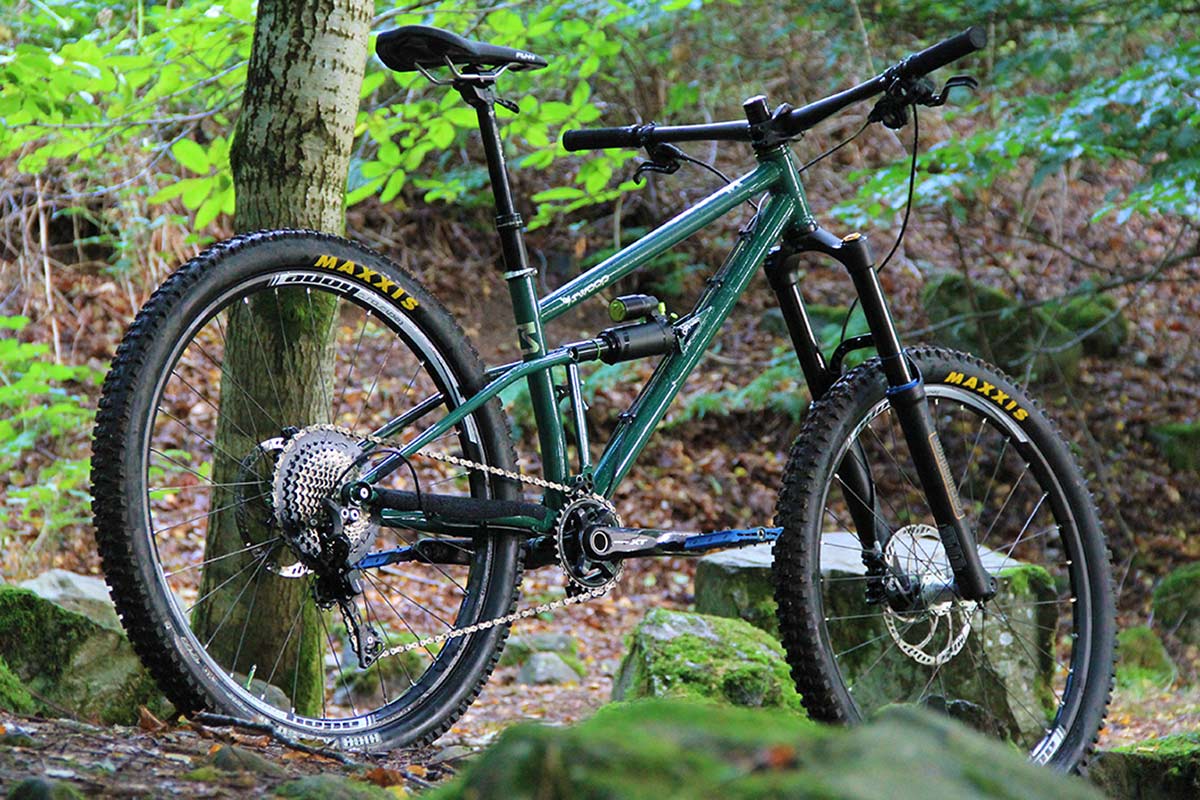The Starling Swoop, is a single-pivot steel frame enduro mountain bike designed and hand built in the UK. Brainchild of aerospace engineer Joe McEwan, we previously visited Joe at his Bristol-based workshop to learn more about his journey from carbon fibre stress researcher to full-time steel frame fabricator; for the workshop tour and interview, click here. A thing of beauty; meticulously clean lines, aggressive long, low and slack geometry, thin steel tubing, and fine tasteful CNC-detailing, the Starling Swoop is a magnificent looking beast. Get yourself one of these and you’ll have no shortage of attention from your fellow shredders when you rock up at the Uplift for a day of gravity-fueled enjoyment. That’s all very well, but how does it actually ride? We rode the Swoop on the downhill and enduro trails of the Tweed Valley in the Scottish Borders, here’s what we think of it.
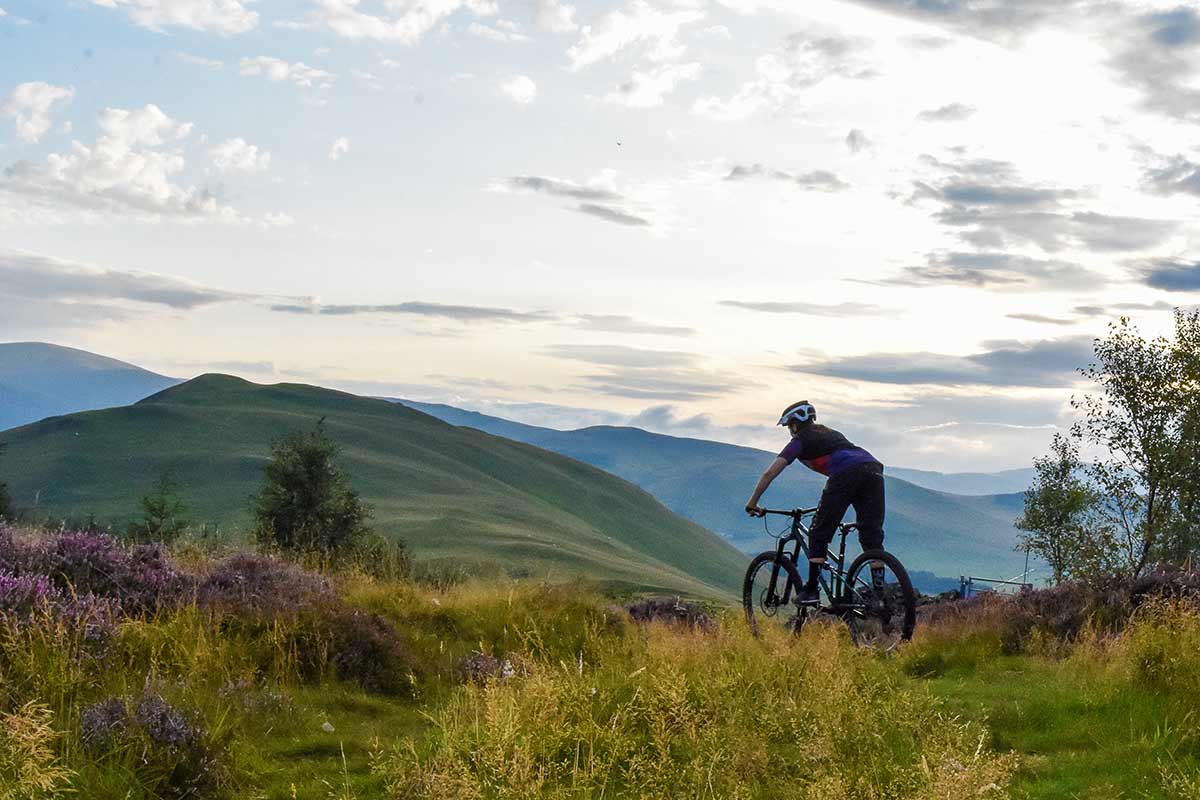
Starling Swoop steel frame 27.5″ enduro MTB
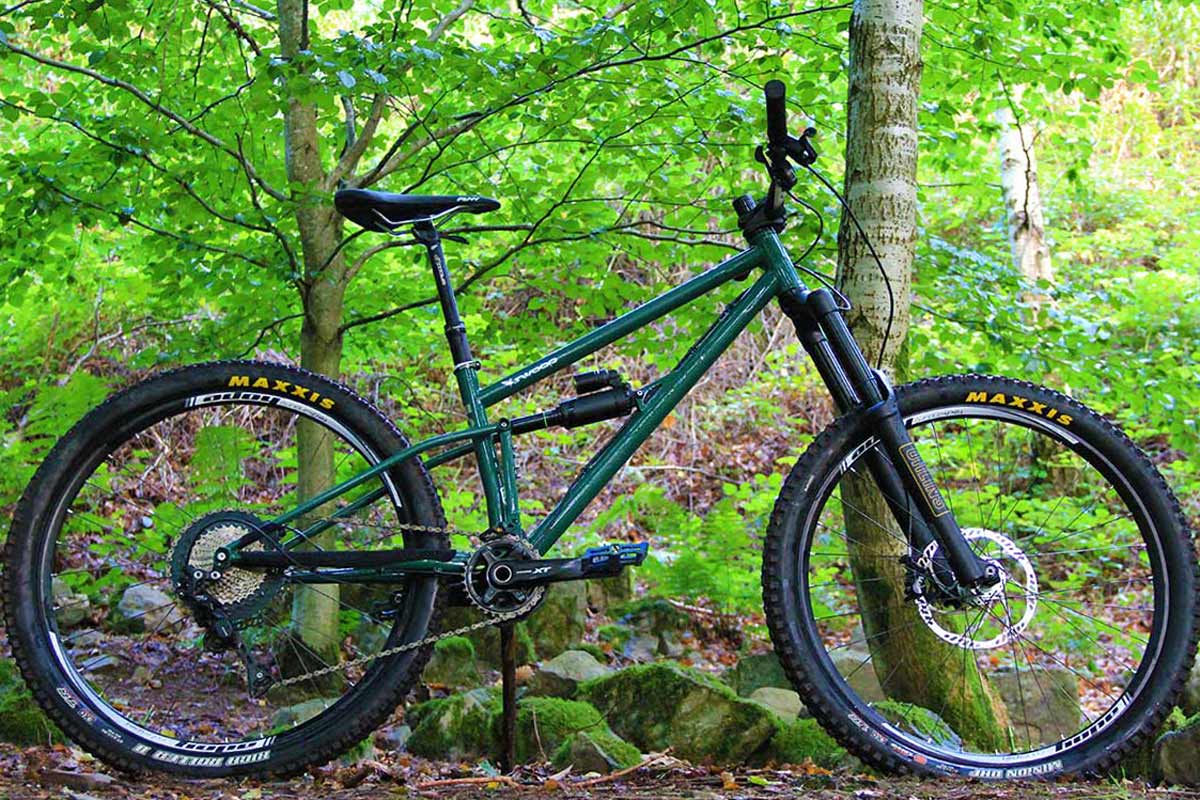
Before I bang on about my personal (and therefore subjective) feelings on the Swoop, here’s a bunch of the indisputable, irrefutable, objective facts about this steel enduro bike’s build.
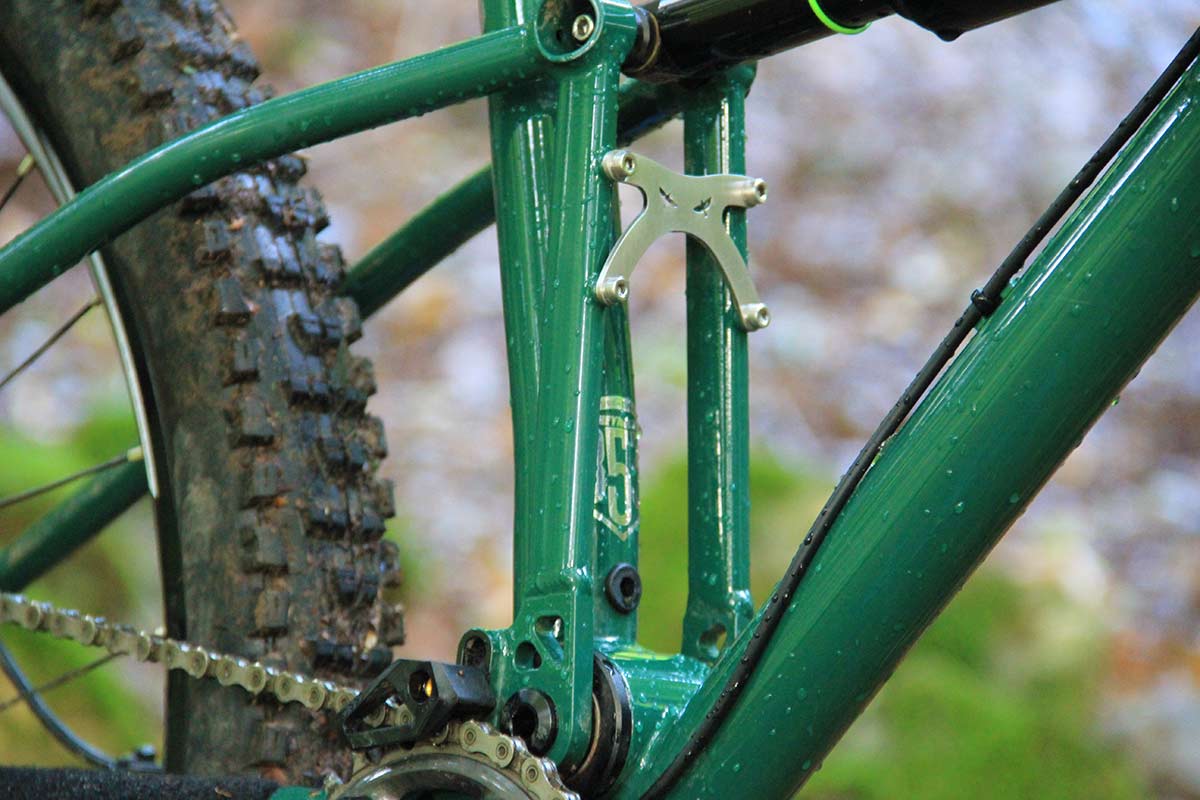
The single-pivot steel frame sits on a 650b wheelset with 160mm of rear wheel travel serviced by a 230x65mm metric shock. The seat angle sits at 77° while the head angle sits at 64°, with a 160mm fork up front.
The build we rode was spec’d with a 170mm Ohlins fork, which Joe says also works well. I rode the small with a reach measurement of 425mm, seat tube length of 375mm, a chainstay length of 435mm (same across the size range) and a BB drop of 15mm.
Going Up on the Starling Swoop
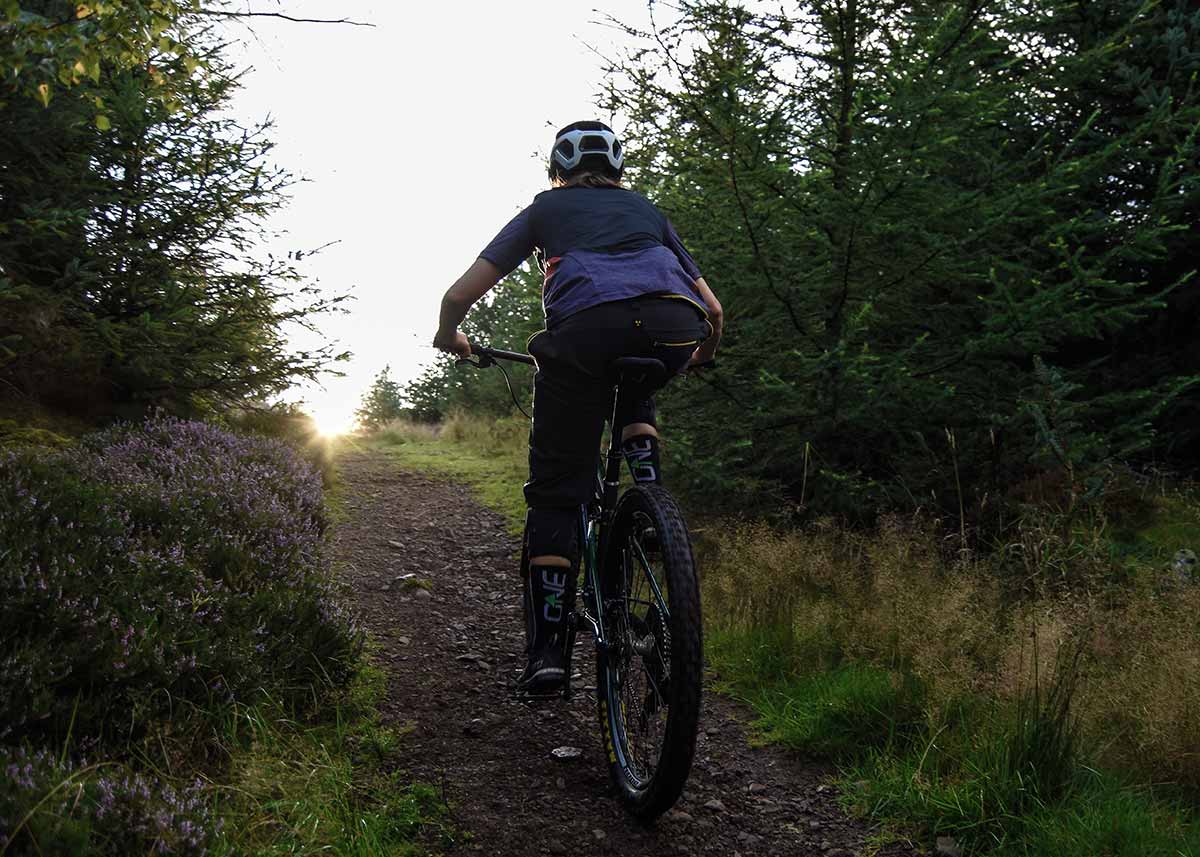
A 77° seat angle has to be a pretty steep seat angle for an enduro bike by anyone’s standards. As you might imagine, it puts the rider in a really strong seated pedalling position making it a pretty efficient pedaller. However, the combination of the steep seat angle coupled with the ultra slack (64°) head angle takes quite a bit of getting used to. If you’re not used to riding a bike of such aggressive geometry, you will feel as though the steering has a tendency to wander on those steeper and more technical climbs.
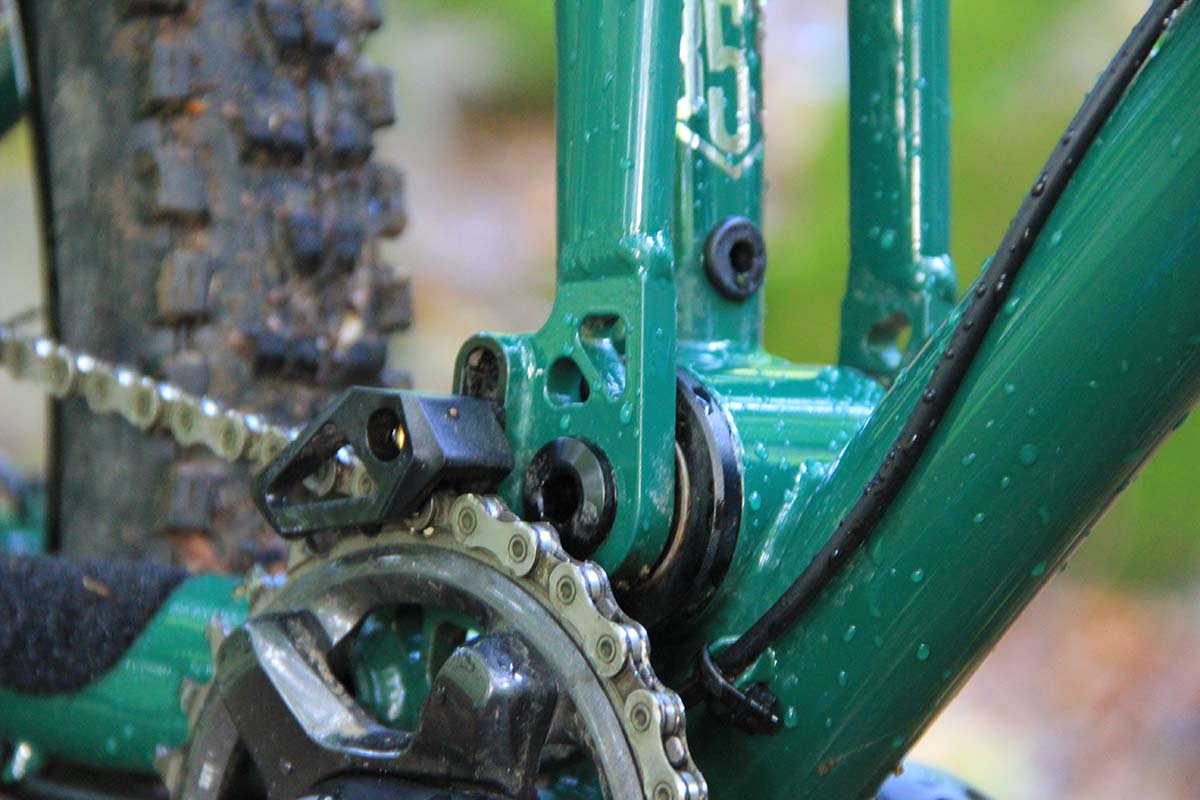
It certainly required some technique adaptation by sitting further forward on the saddle and weighting the front wheel, more than you might do so normally that is. Pedal bob is present but fairly minimal, and doesn’t feel as though it affects the ride too much.
Going Down on the Starling Swoop
The Starling Swoop is at its best when pointing downhill, as any enduro bike should be. We rode the Swoop on some narrow, slow speed and steep enduro trails at Cademuir, and also on some of Innerleithen’s faster downhill tracks, with uplift facilitated by Adrenalin Uplift. The impression we got from the Swoop was quite different depending on the terrain. Undoubtedly, this is a very fast bike. The Swoop felt far more at home on Downhill tracks than it did the slower speed enduro-style trails. The super slack head angle places the rider deep in the cockpit, making the bike feel super stable at speed over rough terrain. The single-pivot suspension platform behaves predictably, and keeps the rear wheel tracking along the ground in a very confidence inspiring manner. The compliance of the steel frame probably has a lot to do with this feeling of good traction too.
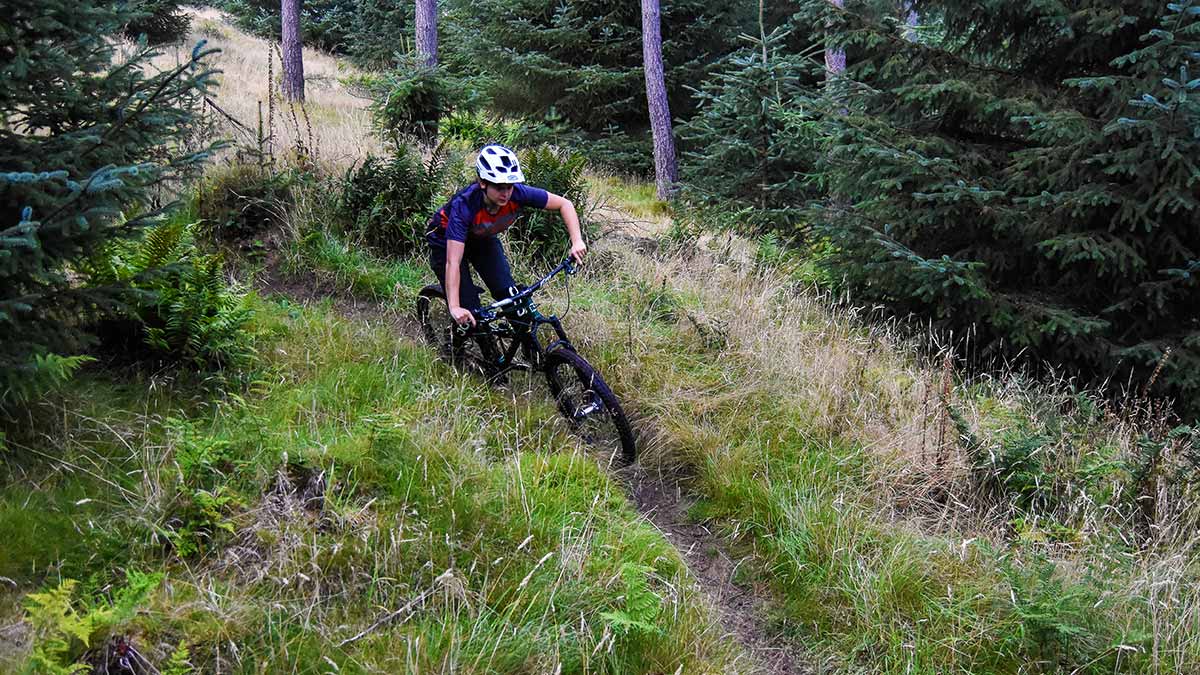
A little more hard work on the slower enduro style tracks, the long wheel base made itself known on tighter turns, requiring quite a lot of effort to set-up wide and angulate into turns.
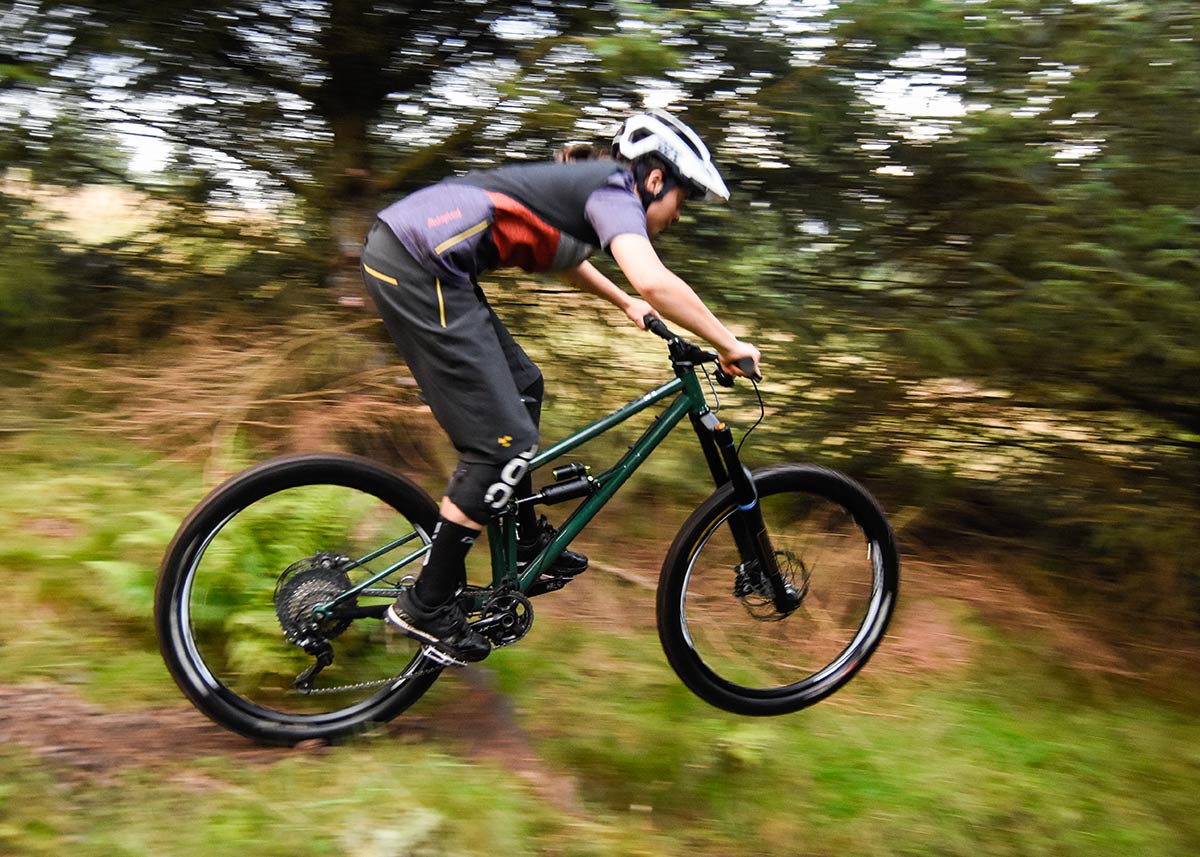
The Starling Swoop isn’t the most playful of 27.5″ wheel bikes I’ve ridden. It definitely feels more business-like than playful, and despite its name, didn’t feel very flighty. The bike feels a little cumbersome when changing lines on trails, or hopping from one rut across to another. Again, this is likely something that a rider’s technique would adapt to, and a little more upper body strength wouldn’t be a bad thing, but still something to bear in mind.
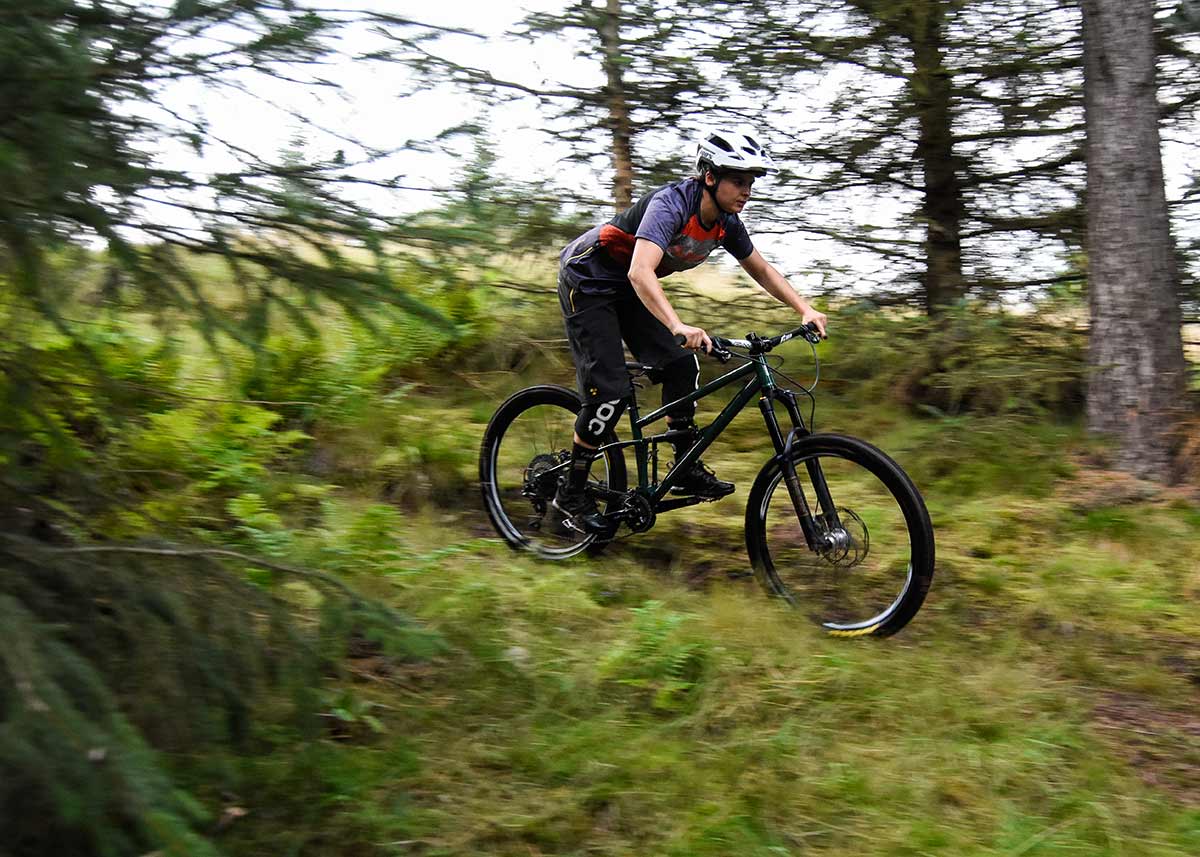
Our test build came with a DVO Topaz T3 Air shock which features a bladder system, in place of an internal floating piston, which allows the rider to increase or decrease the firmness of the shock throughout its entire stroke length. I ran the bladder pressure at the lower end of the scale (170 PSI) as I am a light fairly non-aggressive rider. Increasing the pressure in the bladder up to 200 PSI made the shock feel more firm as expected, but also livened the bike up a bit. However, this did come at the expense of traction over rough terrain at high speed. It is worth noting here that Joe actually prefers to run his Swoop with a coil shock for the superior mid-stroke support.
Starling Swoop: The Bottom Line
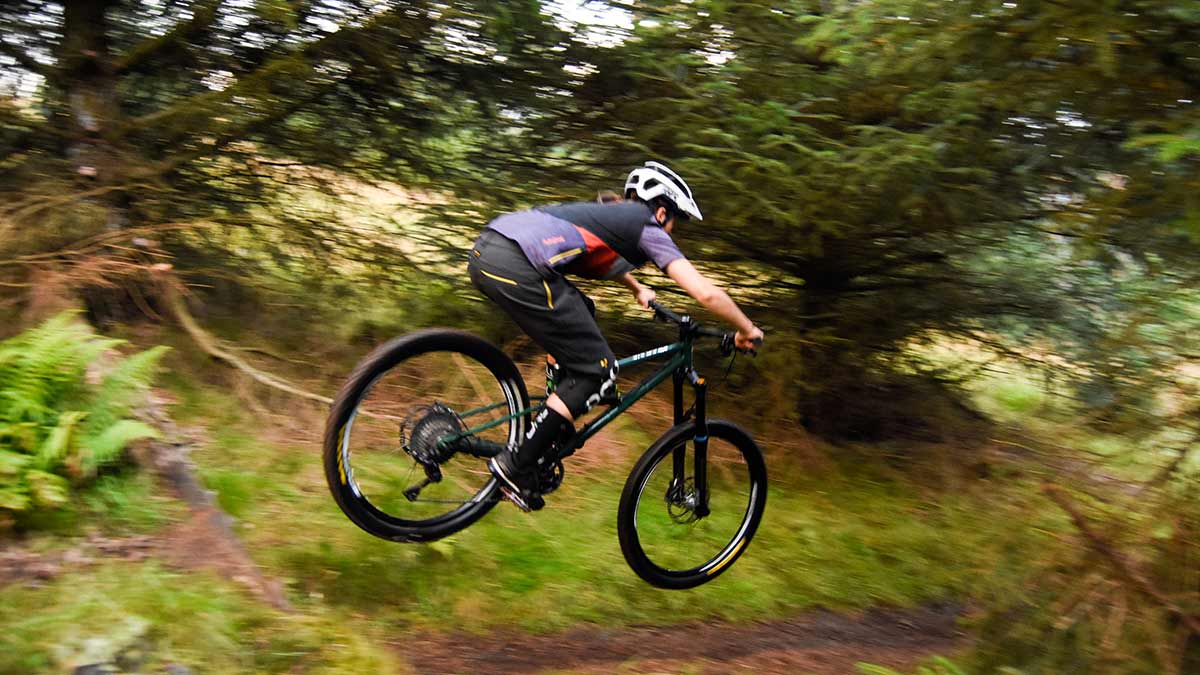
If you’re looking for an out-and-out fast enduro race bike, then look no further. The Starling Swoop is a charger, coming alive on fast, big bermed, steep trails, and, certainly at Innerleithen, it will probably serve you as well as any downhill bike. The bike feels well planted in turns offering reliable rear wheel traction and stability at speed. If you’re not used to riding an enduro bike of such aggressive geometry, be prepared to have to change your riding style to make the bike work to its full potential. It certainly feels like it has bags of the stuff; team rider Dan Bishop has been squeezing every ounce of its potential on the British National Enduro Series circuit this season having won 3 of the 6 rounds.
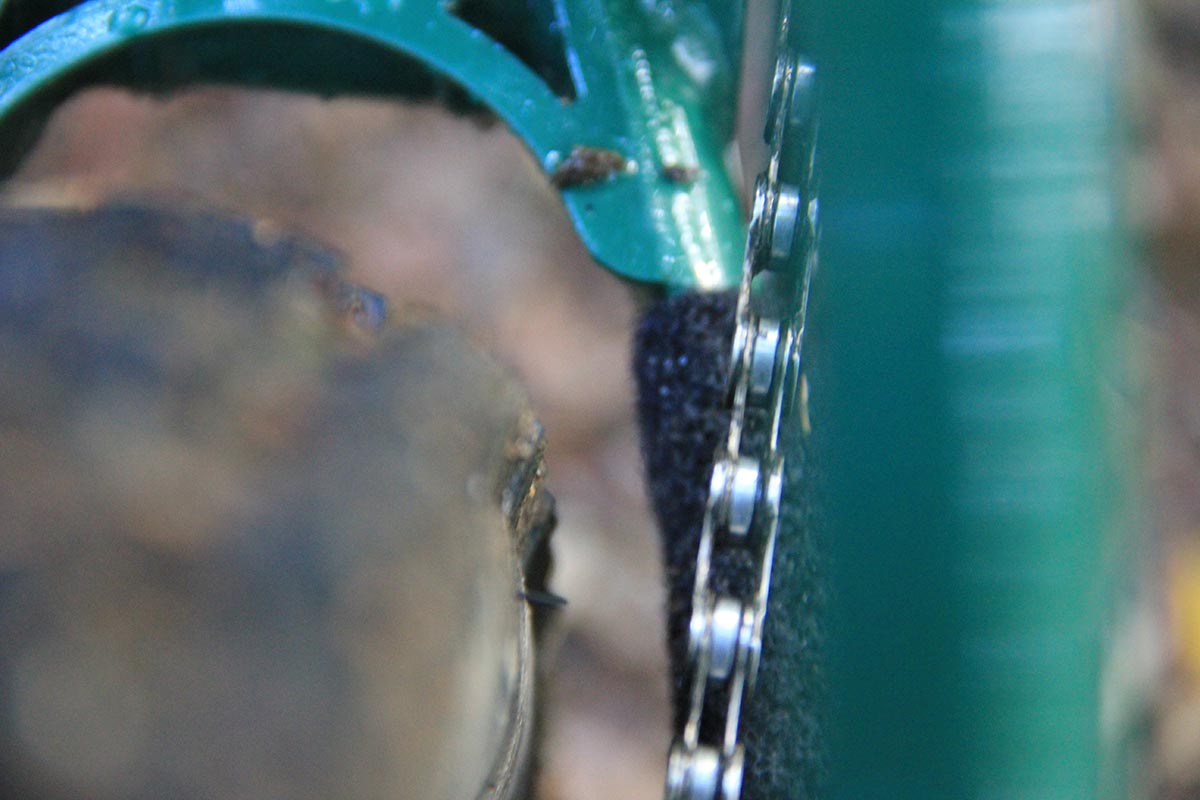
Pricing & Availability
In the past Joe has focused on selling the Starling Swoop to each customer as a custom build, with geometry built to order. Joe will still offer custom builds but will now start selling standard sizes from Small through to Large, serving riders from 5′ 2″ to 6′ 1″. A standard size Swoop starts at £1750 (~$2175) for the frame only, and can be built up with a variety of componentry from Burgtec, SRAM, Hope, Middleburn and Maxxis.
